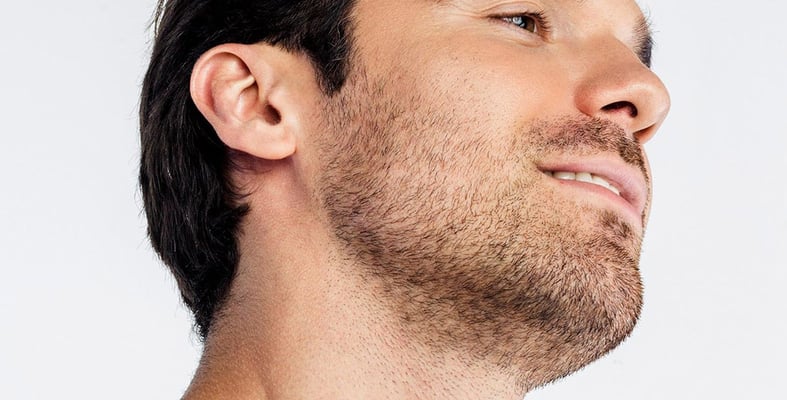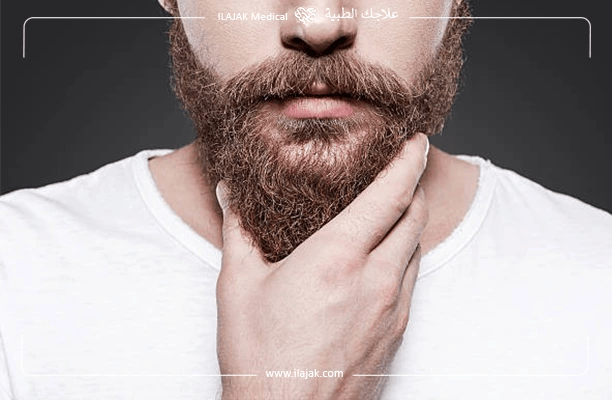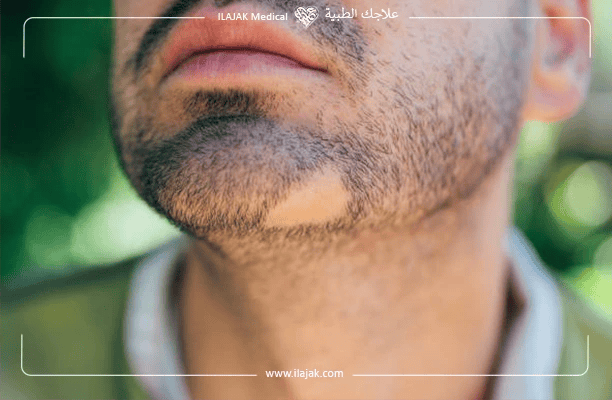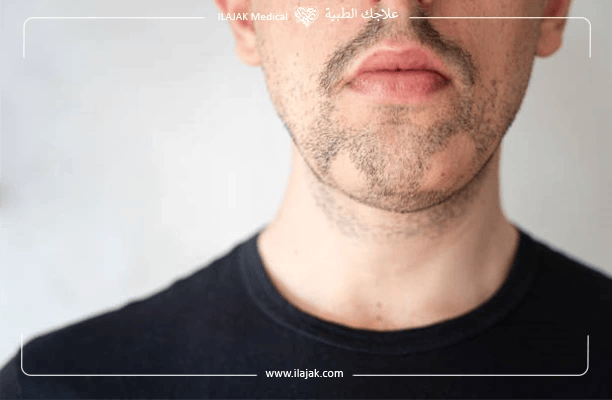The potential side effects of beard transplantation

As a way for people to grow a thick and full beard, beard transplantation has become quite popular in recent years. While beard transplants offer a promising results, potential side effects and concerns might linger in your mind. In this comprehensive guide, we'll explore the safety of beard transplants, addressing its potential side effects, ways to mitigate risks, and provide insights on how to minimize risks and ensure a successful outcome.
Are Beard Transplants Safe?
Beard transplants are painless, last two to five hours, and rarely need a second appointment with the doctor.
Anyone thinking about having their beard transplanted must have the procedure's safety as their first priority. Beard transplantations safety primarily depends on the clinic, surgeon expertise, and adherence to proper medical procedures. Risks connected with the treatment have greatly decreased because to modern medical developments.
The process involves extracting hair follicles from a donor site (usually the back of the scalp) and transplanting them to the beard area.
The hazards of a facial hair transplant and beard restoration are the same as they are for any other hair transplant treatment. Complications are unlikely, and discomfort rarely lasts more than a few days following surgery. Most men are able to return to work soon after their beard transplant procedure.
Reputable clinics make sure that the treatment is carried out in sterile circumstances to reduce the risk of infection and complications. However, as with any medical procedure, there's always a degree of risk involved. It's essential to thoroughly research and choose a qualified and experienced surgeon to minimize the chances of adverse outcomes.

Does Beard Transplant Have Side Effects?
Similar to any other medical procedure, beard transplanting might have minor to serious side effects.
However, these side effects are usually just temporary and manageable with the proper care and attention.
It's crucial to choose a reputed and experienced facility to ensure a safe and successful procedure.
What Are the Potential Side Effects of Beard Transplantation?
Understanding all of the potential negative effects of beard transplantation is essential for making an informed decision.
Consider the following less frequent but more severe side effects:
- Infection: There is a little chance of infection following every surgical treatment. Infections after hair transplant surgery do happen occasionally, but they often do so three to seven days after the treatment. Microbes that enter open wounds around the location of the implanted hair follicles frequently cause infection.
- Scarring: Although modern procedures try to reduce scarring, there is still a possibility that the donor and recipient sites will form small scars.
- Unnatural Appearance: Achieving a natural appearance depends on your hair transplant surgeon's expertise, experience, and the placement of each graft in the recipient area. You must pick a surgeon with a proven track record of doing successful operations.
- Uneven or Patchy Growth: Occasionally, the transplanted hair may not grow evenly, resulting in an uneven or patchy beard. With careful planning and accurate transplanting, this danger can be reduced.
- Loss of Transplanted Hair: The transplanted hairs may start to fall out in the first few weeks after the therapy. It is a natural stage in the healing process. The new hairs should start to regrow after a few months. Full healing and outcomes may take some time, with final results frequently becoming apparent 8 to 12 months after the therapy. By carefully adhering to your surgeon's aftercare recommendations, you can lower this risk.
- Ingrown Hairs: Ingrown hairs, which resemble skin lesions or pimples, might appear within the first few months after a hair transplant. As the patient's new hair starts to grow, they can experience this.
Folliculitis, another name for this type of lesion, can resemble acne and sometimes begins as tiny red lumps that grow around each hair, occasionally having a yellow or white head. It may be unpleasant, itchy, and warm. After a hair transplant, it is regarded as a very common problem. Ingrown hair risk can be decreased with proper aftercare.
- Temporary Itching and Pain: Following the transplant, the healing process may cause temporary itching and pain. This is a normal aspect of healing and can be controlled with prescription drugs.
Read: What Is The Donor Area? Damage And Recovery After Hair Transplant

Risk of Infection After Beard Restoration
Infections are a potential risk after any surgical procedure, including beard restoration. It can be severe and may impact the individual’s health, cause hair loss in areas previously not experiencing loss, and significantly reduce the beard transplant’s success. The major source of infection is unclean conditions at the donor or graft site. The danger of infection is quite minimal, but severe infections may damage the look of the beard, requiring follow-up restoration surgery to fix the problem regions.
Tips for Avoiding Infection After Beard Transplant
To minimize the risk of infection:
- Follow Post-Operative Instructions: Your surgeon will provide you with specific post-operative care instructions. Follow these diligently to prevent infection.
- Keep the Area Clean: Gently clean the transplanted area as directed by your surgeon to prevent the buildup of bacteria.
- Avoid Touching the Area: Refrain from touching the treated area with unwashed hands to prevent introducing bacteria.
- Attend Follow-Up Appointments: Regular follow-up appointments with your surgeon will allow them to monitor your progress and address any concerns.
- Smoking and alcohol: Avoid tobacco products, smoking, and alcohol during the recovery period.
Read also: Hereditary-pattern baldness: Causes, Symptoms and best Treatment Methods
Signs of Infection After Beard Restoration
After beard restoration, it's essential to detect the symptoms of infection so that, if necessary, quick medical assistance may be obtained. Infection symptoms might include:
- Excessive bleeding
- Extreme Redness: If the region that has received treatment becomes more red rather than lessens, it may be infected.
- Swelling: Excessive swelling or edema that is becoming worse might be an infection.
- Pain or Discomfort: The healing process following the transplant may cause brief pain and discomfort. This is a normal aspect of healing and may be controlled with prescription drugs. However, if your discomfort or pain gets worse rather than better, an infection can be at blame.
- Fever: Fever may be a sign of an infection. After the surgery, call your healthcare practitioner if you start feeling feverish.
Steps to Take During Active Infection
Without treatment, infection symptoms will worsen over time.
According to PubMed.gov, the patient's illness has to be treated right now since it is so important. If a patient has exceptional pain, redness, swelling, excessive bleeding, or burning sensations in their scalp following a hair restoration treatment, they should speak with their surgeon immediately.
How to Reduce the Side Effects of Beard Transplantation?
While some side effects are normal parts of the healing process, you can take steps to minimize discomfort and ensure a smooth recovery:
- Follow Aftercare Instructions: Strictly adhere to the post-operative care instructions provided by your surgeon.
- Avoid Sun Exposure: Protect the treated area from direct sunlight to prevent complications and irritation.
- Stay Hydrated: Drinking plenty of water aids in the healing process and reduces the risk of itching.
- Avoid Smoking: Smoking can hinder the healing process and increase the risk of complications. If you smoke, consider quitting before and after the procedure.
Read also: Beard and Moustache Transplant in Turkey
What to Expect After Beard Transplant
Patients can expect some soreness and redness in the transplanted region after undergoing a beard transplant. However, this usually decreases within a few days, and it's reasonable to have concerns regarding recovery process and the time limit for visible results. The transplanted hairs may fall out at first, although this is just temporary.
New hair growth usually begins within a few weeks and progressively becomes thicker and more noticeable over the next several months. To obtain the greatest results, it is vital to adhere to the clinic's post-operative care requirements.

Ilajak Medical Services After the Beard Transplant
Reputable clinics often offer follow-up services to monitor your recovery and ensure optimal results.
At Ilajak Medical, surgeons have been highly trained, prioritize your safety and satisfaction throughout the beard transplantation process. Our team of experienced professionals ensures a comprehensive consultation, personalized treatment plan, and thorough aftercare guidance.
In contrast to non-surgical hair operations, a transplanted beard has the same qualities as a natural beard. It can be trimmed, shaved off and experimented without being destroyed after the first few months. We are dedicated to helping you achieve your desired beard appearance with minimal risks and optimal results, we provides comprehensive post-transplant care, including regular check-ups, advice on proper care, and addressing any concerns you might have. Such services contribute to a successful and hassle-free recovery process.
Conclusion: Navigating the Beard Transplant Journey
For people who want a longer, stronger beard, a beard transplant might be a life-altering procedure. Even if there may be adverse effects, choosing a trustworthy surgeon and adhering to correct care instructions greatly reduces risks. A successful beard transplant is made possible by Ilajak Medical's committed services. Make an informed decision if you're thinking about getting a beard transplant by doing your research and talking to experts.
If you're considering getting a beard transplant, do your search and talk to professionals to make an educated decision. If you're considering a beard transplant, consult with our professionals for specialized guidance and care. Don't forget that an informed approach yields a pleasing outcome.
beard transplant side effects faqs
The success rate of beard transplantation varies based on several factors, including the surgeon's expertise, the patient's health, and proper postoperative care. However, a well-performed procedure can yield highly satisfactory results for most individuals.
The decision to have a beard transplant is individual and is based on your objectives. Consider it if drastically increasing the length of your beard gives you more self-assurance and respect.
Yes, beard transplants have long-lasting effects. The hair that has been transplanted usually resists hair loss, and the hair follicles usually preserve the features of the donor location. They will therefore carry on growing just like facial hair would naturally.20% of occurrences of recurrence for inflammatory disorders like alopecia areata are to be expected.
Even though beard transplantation can provide amazing results, it's important to be informed of any dangers or adverse effects, which may include infection, scarring, and transient hair loss
You may dramatically lower the chance of infection by carefully following your surgeon's aftercare recommendations, keeping the area clean, and avoiding touching it with unwashed hands
The process of transplanting a beard is mostly painless. The entire operation is conducted under local anesthetic. Painkillers aid in reducing any discomfort you might have. You can also visit a doctor if you are in any pain.
sources :
healthline.com



Treatment Services
In the Best Medical Centers
Contact Us
Please fill the form below and describe your condition, We will contact you back
- Dental Treatment
- Hair Transplant
- Obesity Surgery
- Vision Correction
- Health Resorts
- Other Medical Services
- No elements found. Consider changing the search query.
- List is empty.
Your personal data is processed as indicated in the general statement text and by continuing, you explicitly consent to the processing

